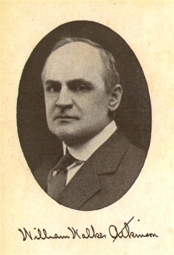
Taken from The Science of Breath by Yogi Ramacharaka, 1904.
Breath is life! Life is absolutely dependent upon the act of breathing.
To breathe is to live, and without breath there is no life. Not only are the higher animals dependent upon breath for life and health, but even the lower forms of animal life must breathe to live, and plant life is likewise dependent upon the air for continued existence.
The infant draws in a long, deep breath, retains it for a moment to extract from it its life-giving properties, and then exhales it in a long wail, and then its life upon earth has begun. The old man gives a faint gasp, ceases to breathe, and life is over. From the first faint breath of the infant to the last gasp of the dying man, it is one long story of continued breathing. Life is but a series of breaths.
Breathing may be considered the most important of all of the functions of the body, for, indeed, all of the other functions depend upon it. A person may exist some time without eating; a shorter time without drinking; but without breathing his existence may be measured by a few minutes.
And not only are people dependent upon breath for life, but they are largely dependent upon correct habits of breathing for continued vitality and freedom from disease. An intelligent control of our breathing power will lengthen our days upon earth by giving us increased vitality and powers of resistance, and, on the other hand, unintelligent and careless breathing will tend to shorten our days, by decreasing our vitality and laying us open to disease.
In earlier civilizations people had no need of instruction in breathing. Like the lower animal and the child, people breathed naturally and properly, as nature intended them to do, but civilization has changed him us this and other respects. People have contracted improper methods and attitudes of walking, standing and sitting, which have robbed them of their birthright of natural and correct breathing. We have paid a high price for civilization. Today only some natives breathe naturally, unless they have been contaminated by the habits of the civilized man.
The percentage of civilized people who breathe correctly is quite small, and the result is shown in contracted chests and stooping shoulders, and diseases of the respiratory organs.
The Occidental teachings show that physical health depends upon correct breathing. The Oriental teachers not only admit that their Occidental brothers are right, but say that in addition to the physical benefit derived from correct habits of breathing, people’s mental power, happiness, self-control, clear-sightedness and even their spiritual growth may be increased by an understanding of the Science of Breath.
The yogi practices exercises by which he attains control of his body and is able to send to any organ or other part of his body an increased flow of vital force or ‘prana’ (vital life force), thereby strengthening and invigorating that part or organ. Oriental teachers know all that the Western teachers knows regarding the physiological effect of correct breathing, but they also know that the air contains more than oxygen, hydrogen and nitrogen, and that something more is accomplished than the mere oxygenating of the blood. The Oriental knows something about ‘prana,’ of which his Western brother is ignorant, and he is fully aware of the nature and manner of handling that great principle of energy, and its effect upon the human body and mind. He knows that by rhythmical breathing one may bring himself into harmonious vibration with nature, and aid in the unfoldment of his latent powers.
He knows that by controlled breathing he may not only cure disease in himself and others, but also practically do away with fear and worry and the baser emotions. ‘Prana’ is a Sanskrit term meaning Absolute Energy. A universal principle of energy or force, and that all energy or force is derived from that principle, or rather, is a particular form of manifestation of that principle. ‘Prana’ is a universal principle and is the essence of all motion, force or energy, whether manifested in gravitation, electricity, the revolution of planets, and all forms of life, from the highest to the lowest. It is the soul of Force and Energy in all their forms, and that principle which, operating in a certain way, causes the form of activity which accompanies Life.
This great principle is in all forms of matter and yet it is not matter. It is in the air, but it is not the air nor one of its chemical constituents. Animal and plant life breathe it in with the air, and yet if the air did not contain it not they would die even though they might be filled with air. It is taken up by the system along with the oxygen, and yet is not the oxygen.
In Genesis we read about, ‘the breath of the spirit of life,’ which some philosophers would say describes prana.
We are constantly inhaling air that is charged with prana, and are constantly extracting the latter from the air and appropriating it to our uses. Prana is found in its freest state in the atmospheric air, which when fresh is highly charged with it, and we draw it to us more easily from the air than from any other source. In ordinary breathing we absorb and extract a normal supply of prana, but by controlled and regulated breathing, generally known as Yogi breathing, we are enabled to extract a greater supply, which is stored away in the brain and nerve centers, to be used when necessary.
We store away prana, just as the storage battery stores electricity. The many powers and abilities that have often been demonstrated by people from the East is due largely to their knowledge of this fact and their intelligent use of this stored-up energy.
The Yogis know that by certain forms of breathing they establish certain relations with the supply of prana and may draw on the same for what they require. Not only do they strengthen all parts of their body in this way, but the brain itself may receive increased energy from the same source, and latent faculties within an individual may be developed. One who has mastered the science of storing away prana, either consciously or unconscious, often radiates vitality and strength which is felt by those coming in contact with him, and such a person may impart this strength to others, and give them increased vitality and health. What is called magnetic healing or laying on of hands is performed in this way, although many practitioners are not aware of the source of their power.
Western scientists have been dimly aware of this great principle with which the air is charged, but finding that they could find no chemical trace of it, or make it register on any of their instruments they have generally treated the Oriental theory with disdain. They could not explain this principle, and so denied it. They seem, however, to recognize that the air in certain places possesses a greater amount of ‘something’ and sick people are directed by their physicians to seek such places in hopes of regaining lost health.
If we think of prana as being the active principle of what we call vitality, we will be able to form a much clearer idea of what an important part it plays in our lives. Just as oxygen is utilized in the blood system so is the supply of prana utilized by the nervous system. Prana is exhausted by our thinking, willing, acting and etc., and because of this constant replenishing is necessary. Every thought, every act, every effort of the will, every motion of a muscle, uses up a certain amount of what we would call nerve force, which is really a form of prana. To move a muscle the brain sends out an impulse over the nerves and the muscle contracts because of the available prana. It is again important to remember that the greatest portion of prana that people acquire comes to them from the air they inhale. This is why it is of the greatest importance that proper breathing is readily understood.
The Yogis classify respiration into four general methods:
- High Breathing
- Mid Breathing
- Low Breathing
- Yogi Complete Breathing
High Breathing is known in the Western world as Clavicular Breathing or Collarbone Breathing. A person breathing in this manner elevates the ribs and raises the collarbone and shoulders, at the same time drawing in the abdomen and pushing its contents up against the diaphragm, which in turn is raised. The upper part of the chest and lungs, which is the smallest, is used, and consequently but a minimum amount of air enters the lungs. This high breathing is the worst form of breathing.
Mid Breathing is also known as Rib Breathing, or Inter-Costal Breathing, and while less objectionable than High Breathing, is far inferior to either Low Breathing or to the Yogi Complete Breath. In Mid Breathing the diaphragm is pushed upward, and the abdomen drawn in. The ribs are raised somewhat, and the chest is partially expanded.
Low Breathing as a form of respiration is far better than either of the two proceeding forms, and many Western writers have extolled its merits and have exploited it under the names of Abdominal Breathing, Deep Breathing, or Diaphragmatic Breathing. Although many Western authorities write and speak of this method as the best known from of breathing, the Yogis know it to be but a part of a system they know as The Complete Breath.
The Yogi Complete Breath includes all the good points of High Breathing, Mid Breathing and Low Breathing, with the objectionable features of each eliminated. It brings into play the entire respiratory apparatus, every part of the lungs, every air-cell, every respiratory muscle. The entire respiratory organism responds to this method of breathing and the maximum amount of benefit is derived from the minimum expenditure of energy. The chest cavity is increased to its normal limits in all directions and every part of the machinery performs it natural work and functions.
One of the most important features of this method of breathing, is the fact that the respiratory muscles are fully called into play, whereas in the other forms of breathing only a portion of these muscles are so used. In Complete Breathing, among other muscles, those controlling the ribs are actively used, which increases the space in which the lungs may expand, and also gives the proper support to the organs when needed. Another aspect of the Yogi Science of Breath, is to learn how to breathe through the nostrils, and overcome the common practice of mouth-breathing. Through the nostrils comes health and strength and through the mouth disease and weakness.
